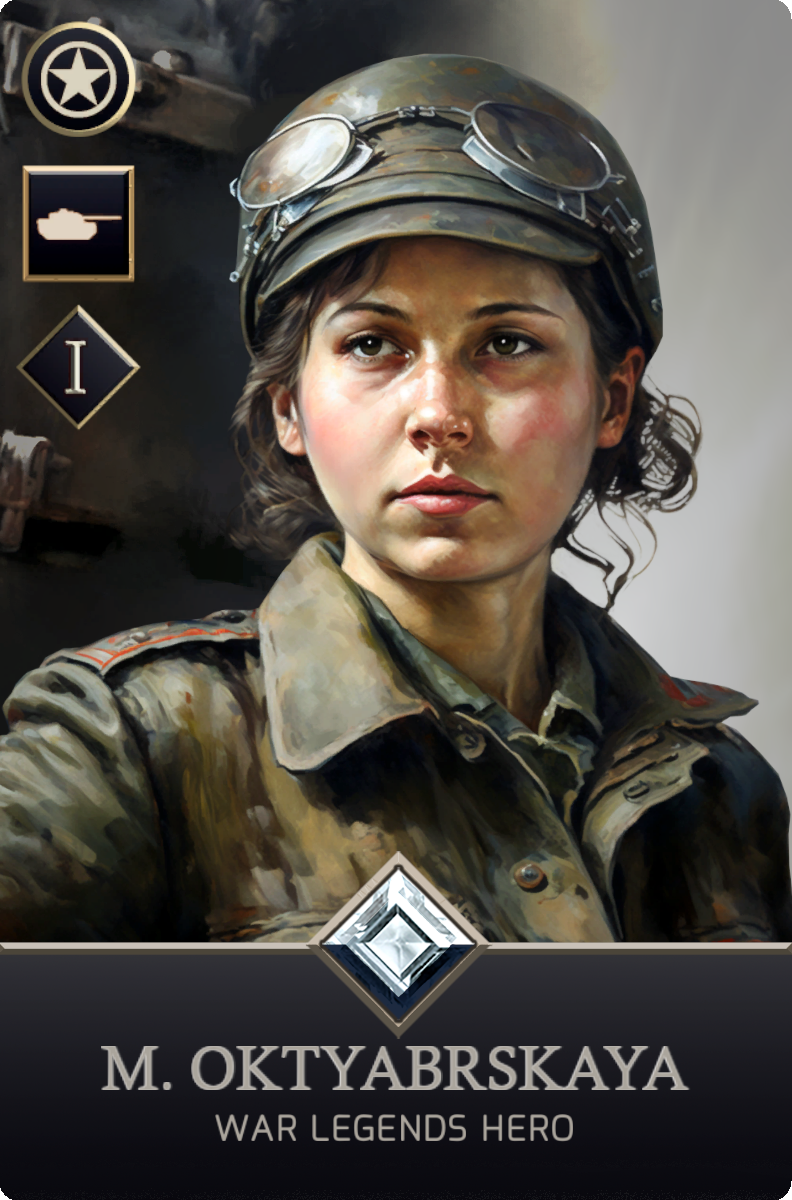


Hero Background
María Vasílievna Oktiábrskay was born on 12 August 1905 in Crimea, in a small village called Kiyat.
From a humble family of Ukrainian ethnicity, she spent her childhood and youth in various Crimean cities, until 1925, at the age of twenty, when she married Ilya Fedotovich Riadnenko, a cadet in the cavalry school.They took the surname of Oktyabrosky.
From that time on, Maria began to take an interest in military life and completed courses in nursing, driving and learned to shoot with a machine gun.
Due to her husband's duty, they lived in different cities of Crimea and Moldavia, until the beginning of the war against Nazi Germany, when she was evacuated together with her sister to Tomsk Oblast, where she worked in an artillery academy.
On 9 August 1941, the military commissar of the 206th Rifle Division, Ilya, died in battle during the defense of Kiev.
When Maria learned of her husband's death two years later, she decided to give up her life in order to take revenge on the Germans, so she tried to be drafted into the army. She was rejected on medical grounds and because of her age.
Willing to fight in any way she could, she took advantage of a campaign by the USSR, which at the time was collecting contributions for the war effort, to buy a tank. Together with her sister, selling all her belongings, she managed to raise 50,000 roubles, and then sent a telegram to Stalin himself.
In the letter, Maria stated her reasons for her financial contribution. She requested that the tank be named "Comrade-in-Arms" and that she herself would drive it.
Stalin himself replied a few days later, thanking her for the gesture, and as a final sentence he said goodbye with "It will be done as you wish".
After 5 months of training as a tank driver at the Omsk academy, she was sent to the Western Front as a driver and mechanic of a T-34 tank of the 26th brigade under the name "Comrade-in-Arms". On her arrival, her comrades took her as a joke and did not take her seriously, but she soon won their respect and admiration.
During the fighting in Vitebsk Oblast, her tank managed to break through enemy lines and destroyed an anti-tank position next to its garrison. She was wounded during the action, but was not evacuated until two days later, when they were able to break out of the German siege.
Once rejoining her tank, Maria continued to prove her courage and bravery in several battles, until on 18 January 1944, fighting near Krinki station, and after destroying several machine gun nests, her tank was hit and rendered inoperative. Maria got out of the tank with the intention of repairing it while her comrades protected her, but an explosion from a nearby mine hit her in the head, causing severe damage to her head.
She was operated on in the emergency room and then transferred to Smolenks hospital, where she died two months later due to the severity of her injuries.
In August 1944, she was posthumously awarded the title of Hero of the Soviet Union and the Order of Lenin.








